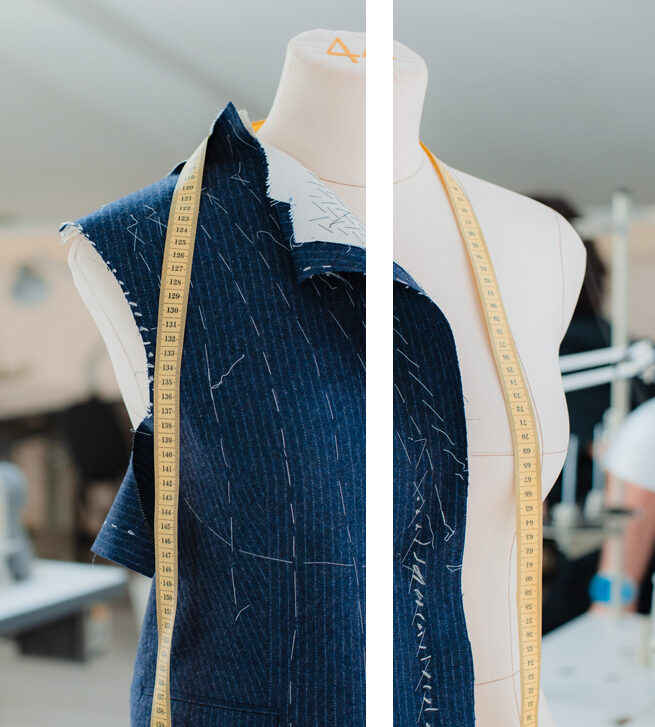Tailor Perth Insights: Discover the Art of Fine Tailoring in Perth
Tailor Perth Insights: Discover the Art of Fine Tailoring in Perth
Blog Article
Understanding the Tailoring Process: From Material Option to Last Suitable for the Suitable Wardrobe
The tailoring procedure is a complicated interplay of art and scientific research, beginning with the crucial decision of fabric choice and culminating in the specific modifications of last fittings. Each material type brings distinct qualities that affect not only the visual charm but additionally the garment's durability and viability for various celebrations.
Importance of Material Option
Selecting the ideal fabric is critical in the tailoring process, as it straight influences the convenience, sturdiness, and total visual of the last garment (tailor perth). The selection of material establishes the structure for the garment's style, performance, and performance. Different textiles have distinct properties, such as stretch, breathability, and weight, which can substantially influence just how the garment drapes and fits the body
Moreover, fabric option affects the garment's durability and simplicity of care. Top notch textiles can hold up against damage, preserving their look and framework in time, while lower-quality materials may result in pilling or fading. Additionally, the best fabric contributes to the garment's capability to shift across celebrations and periods, therefore boosting convenience.
A customized piece made from a proper textile not just showcases craftsmanship but additionally raises the user's confidence. Understanding the subtleties of material option is extremely important for any type of tailoring undertaking. It makes sure that the end product not just meets the visual wishes of the customer but likewise straightens with useful demands, thereby achieving a harmonious equilibrium in between type and feature in the tailored closet.
Types of Fabrics and Their Usages
Comprehending the various kinds of materials available is essential for making informed choices during the tailoring process. Each material possesses special qualities that determine its suitability for details garments and events.
Cotton, recognized for its breathability and softness, is ideal for laid-back wear and summer clothes. Its flexibility permits it to be customized right into whatever from shirts to gowns. Woollen, on the other hand, is favored for its heat and structure, making it a superb choice for formal fits and outerwear - tailor perth. Its all-natural elasticity assists garments keep shape in time.
Silk emanates deluxe and is light-weight, making it perfect for eveningwear and fragile blouses; however, it requires cautious handling because of its frailty. Bed linen, with its textured finish, is a popular choice for warm climates, giving a airy and crisp feel, however it wrinkles quickly, which may impact the garment's look.
Artificial materials, such as polyester and nylon, offer longevity and resistance to wrinkles, making them appropriate for day-to-day wear and energetic apparel. Recognizing these textile types and their residential or commercial properties permits better decision-making, guaranteeing that each tailored piece not only fits well yet likewise lines up with the intended purpose and occasion.
The Tailoring Techniques Discussed
The art of tailoring relies on a variety of techniques that change material right into well-fitted garments. Central to this procedure is pattern preparing, click for info where a tailor creates templates based on the client's measurements and desired design. This preliminary action makes sure that the garment will fit the user appropriately before any type of cutting takes place.
When patterns are established, reducing techniques enter play. Accuracy is vital as mistakes can result in misfitting garments. Tailors typically utilize numerous reducing techniques, such as single-layer reducing for complex designs and multiple-layer reducing for effectiveness on conventional patterns.
Basting is another necessary technique, permitting dressmakers to temporarily sew fabric assemble for a preliminary installation. This technique provides the possibility to examine the drape and total shape prior to last stitching.
Seaming methods, consisting of french seams and flat-felled seams, boost the garment's longevity and aesthetic allure. Tailors additionally use methods such as dig this interfacing and cushioning to offer framework and form to specific areas, like shoulders and collars.
Lastly, ending up strategies, consisting of hemming and edge completing, ensure the garment's longevity while giving a sleek look. With each other, these strategies form the foundation of efficient tailoring, resulting in splendid, custom-fit apparel.
Fitting Adjustments and Considerations

Trick considerations include the shoulder fit, which ought to neither droop nor restrict activity, and the sleeve length, which ought to allow for comfortable arm activity while keeping a refined look. In addition, changes at the waist can refine the shape, with alternatives to let out or absorb material as needed.
The surge of pants is another important aspect; it ought to sit comfortably over the hips without triggering discomfort, permitting for convenience of motion. Hemming sizes for both pants and skirts need to show the user's favored style while valuing proportions.

Keeping Your Tailored Attire
Appropriate maintenance of customized garments is vital to protecting their fit and appearance over time. To make sure longevity, routine cleansing is extremely important. Always follow the treatment label instructions, which might suggest dry cleaning for delicate fabrics or machine washing for more resilient More Help materials. Avoid regular laundering, as this can wear down the fabric and alter the garment's shape.
Storage is just as important; use cushioned wall mounts for coats and jackets to preserve shoulder structure, and store trousers folded up neatly or hung to avoid creasing. Safeguard garments from direct sunshine, which can discolor colors and damage fibers.
In addition, regular assessments for minor fixings can protect against bigger problems. Check for loosened buttons, tearing joints, or indications of moth damages, attending to these problems promptly to keep the garment's stability.
Finally, think about seasonal rotation. Using tailored items in moderation permits fabrics to recoup, prolonging their lifespan. By carrying out these maintenance strategies, you can make sure that your customized garments stay as pristine as the day you initially wore them, improving your optimal closet for years ahead.
Final Thought
The tailoring process, encompassing material choice, knowledgeable techniques, and accurate fitting modifications, plays an important function in producing garments that boost both comfort and style. Understanding the relevance of upkeep expands the life of tailored garments, solidifying their value in a well-curated closet.
Picking the appropriate textile is important in the tailoring process, as it directly affects the comfort, toughness, and general aesthetic of the last garment. The option of material establishes the structure for the garment's design, performance, and functionality. Various materials possess distinct properties, such as weight, breathability, and stretch, which can dramatically influence just how the garment drapes and fits the body.
The art of customizing depends on a variety of strategies that transform textile right into well-fitted garments.The customizing process, including fabric selection, experienced strategies, and exact suitable changes, plays an important role in producing garments that boost both convenience and style.
Report this page